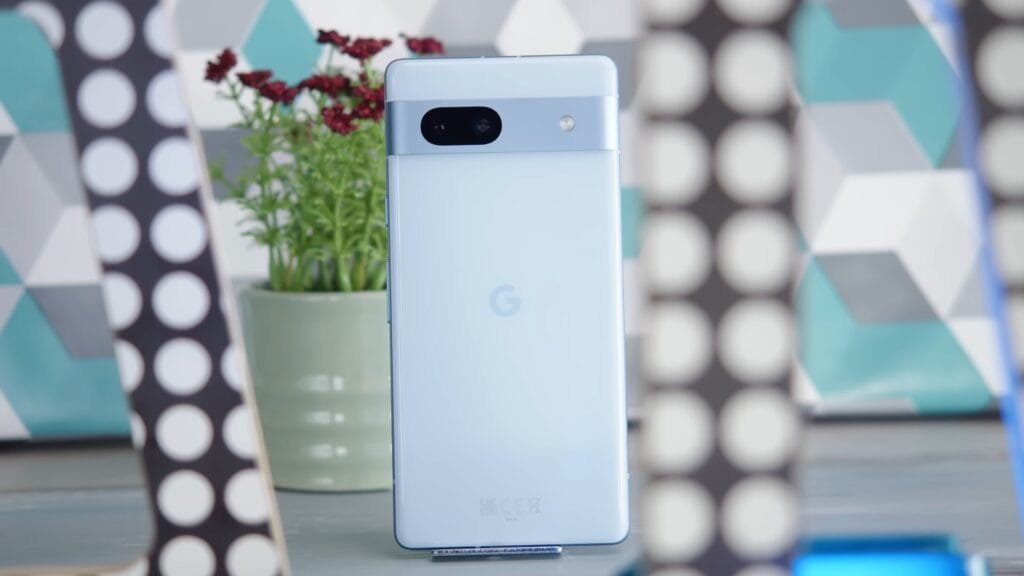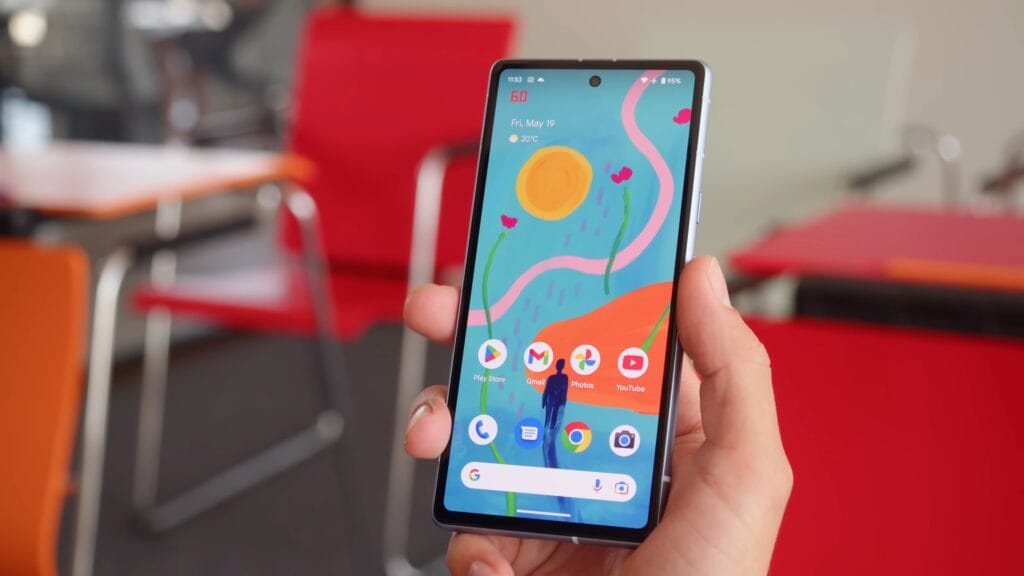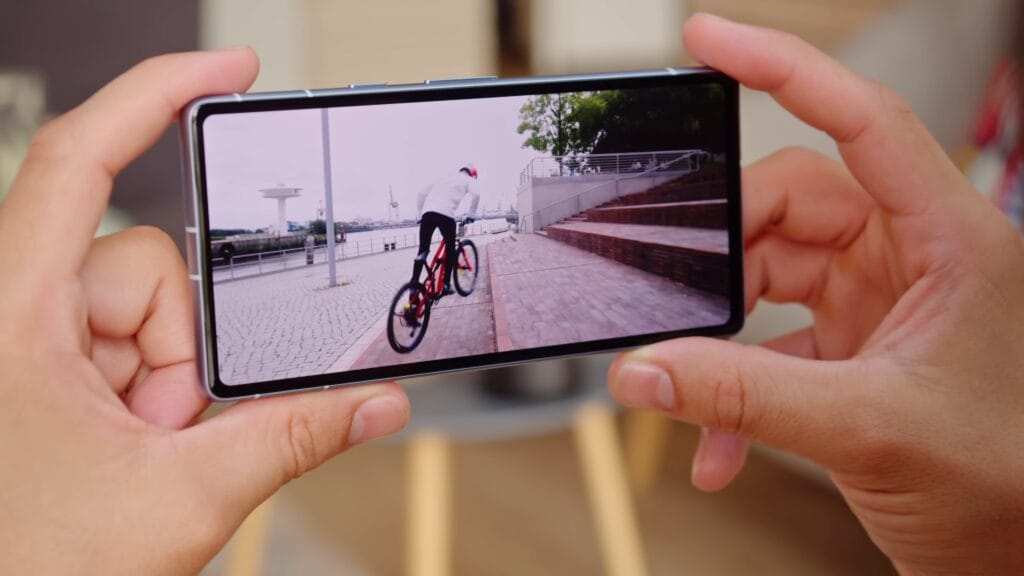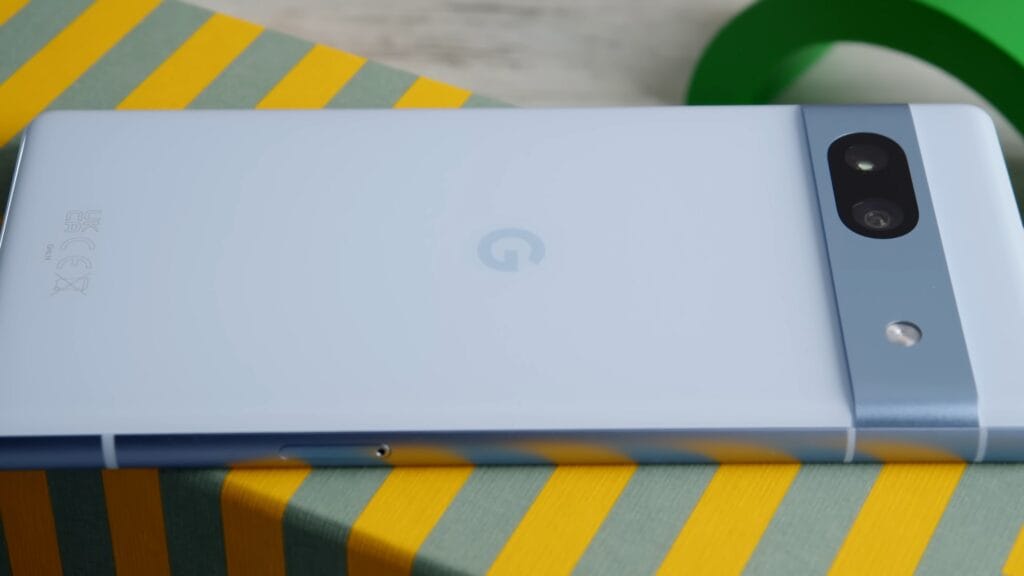I’ve been using the Google Pixel 7a for a month now, and I’m impressed by how much Google has packed into this affordable device. Here’s my detailed take on this mid-range marvel:
Design & Build:
The Pixel 7a shares the same design language as the Pixel 7, with a sleek aluminum frame and a distinct camera bar. However, the back is made of plastic instead of glass, which doesn’t feel as premium but helps keep the weight down. It’s comfortable to hold, and the rounded edges feel good in my hand. The phone comes in Charcoal, Sea, Snow, and Coral colors, offering some fun and vibrant options.
Display:
The 6.1-inch OLED display is bright, vibrant, and surprisingly sharp for a mid-range phone. Colors are accurate, and the 90Hz refresh rate makes scrolling and animations buttery smooth. While it doesn’t get as bright as some high-end phones, it’s still perfectly usable in most outdoor conditions.
Performance:
Powered by the Google Tensor G2 chip, the Pixel 7a delivers impressive performance for a mid-range device. It handles everyday tasks effortlessly, multitasking is a breeze, and even demanding apps and games run smoothly. I haven’t experienced any noticeable lag or slowdown. It’s not the fastest phone on the market, but it’s more than capable for most users.
Camera:
The Pixel 7a’s camera is its standout feature. The 64MP main sensor and 13MP ultrawide lens, coupled with Google’s advanced image processing software, produce stunning photos. Images are sharp, detailed, and bursting with vibrant colors. Low-light performance is also excellent, thanks to Night Sight mode. Portrait mode creates beautiful bokeh effects, and the 13MP front-facing camera takes great selfies.
Battery Life:
The 4385mAh battery easily lasts a full day with moderate to heavy use. I’ve been using it for social media, web browsing, streaming music and videos, and taking lots of photos, and I rarely had to charge it before bedtime. The 18W wired charging isn’t the fastest, but it gets the job done.
Software & User Experience:
The Pixel 7a runs pure Android 13, and the experience is as smooth and intuitive as you’d expect from a Google phone. The software is clean, clutter-free, and packed with helpful features like Now Playing, Call Screen, and Live Translate. The Pixel 7a is also guaranteed to receive at least five years of updates from Google, ensuring you have the latest features and security patches for years to come.
Connectivity & Additional Features:
The Pixel 7a supports 5G, Wi-Fi 6E, Bluetooth 5.3, and NFC. It’s also IP67 water and dust resistant, so you don’t have to worry about accidental spills or splashes. It has stereo speakers that deliver surprisingly good sound quality, but there’s no headphone jack.
Buying Recommendation:
Who’s it for? The Pixel 7a is perfect for budget-minded users who want a flagship-level camera experience and smooth software. It’s ideal for photographers, social media enthusiasts, and anyone who wants a great all-around phone without breaking the bank.
Pros:
- Exceptional camera performance
- Clean and intuitive software
- Smooth performance
- Long-lasting battery life
- 5G connectivity
Cons:
- No expandable storage
- Slow charging
- No headphone jack
Overall: The Google Pixel 7a is a mid-range marvel that delivers flagship-level features at an affordable price. It’s a testament to Google’s commitment to making great technology accessible to everyone. If you’re looking for a phone that takes amazing photos, runs smoothly, and won’t empty your wallet, the Pixel 7a is a fantastic choice.
| Feature | Specification | Remarks |
|---|---|---|
| General | ||
| Brand | ||
| Model | Pixel 7a | |
| Price | (Check current market price) | Competitive pricing |
| Release Date | May 2023 | |
| Dimensions | 152 x 72.9 x 9 mm | Compact and comfortable |
| Weight | 193.5 g | |
| Battery | Li-Ion 4385 mAh, non-removable | All-day battery life |
| Colors | Charcoal, Sea, Snow, Coral | |
| Display | ||
| Type | OLED, 90Hz, HDR | Smooth and vibrant |
| Size | 6.1 inches | |
| Resolution | 1080 x 2400 pixels (~429 ppi density) | |
| Protection | Corning Gorilla Glass 3 | |
| Hardware | ||
| Chipset | Google Tensor G2 (5 nm) | Powerful and efficient |
| CPU | Octa-core (2×2.85 GHz Cortex-X1 & 2×2.35 GHz Cortex-A76 & 4×1.80 GHz Cortex-A55) | |
| GPU | Mali-G710 MP7 | |
| RAM | 8GB | |
| Storage | 128GB | No expandable storage |
| Camera | ||
| Rear | 64 MP, f/1.89, 26mm (wide), 1/1.73″, 0.8µm, OIS | Excellent quality |
| 13 MP, f/2.2, 120˚ (ultrawide), 1.12µm | ||
| Front | 13 MP, f/2.2, (wide), 1.12µm | |
| Video | 4K@30/60fps, 1080p@30/60/240fps, gyro-EIS | |
| Software | ||
| OS | Android 13 | |
| UI | Pixel UI | Clean and intuitive |
| Connectivity | ||
| Network | GSM / HSPA / LTE / 5G | |
| SIM | Nano-SIM | |
| WLAN | Wi-Fi 802.11 a/b/g/n/ac/6e, dual-band, Wi-Fi Direct | |
| Bluetooth | 5.3, A2DP, LE | |
| Positioning | GPS, GLONASS, GALILEO, BDS | |
| NFC | Yes | |
| Radio | No | |
| USB | USB Type-C 3.2, DisplayPort | |
| Sensors | Fingerprint (under display, optical), accelerometer, gyro, proximity, compass |





Roshan Kumar Sahoo is a multifaceted journalist with expertise in entertainment-related news, sports , tech, and international relations. His ability to navigate these diverse fields allows him to provide readers with a rich blend of content, from the latest entertainment buzz to cutting-edge sports technology and insightful analysis of global affairs. Roshan’s writing is characterized by its depth, accuracy, and engaging style, making him a trusted voice across multiple domains.



